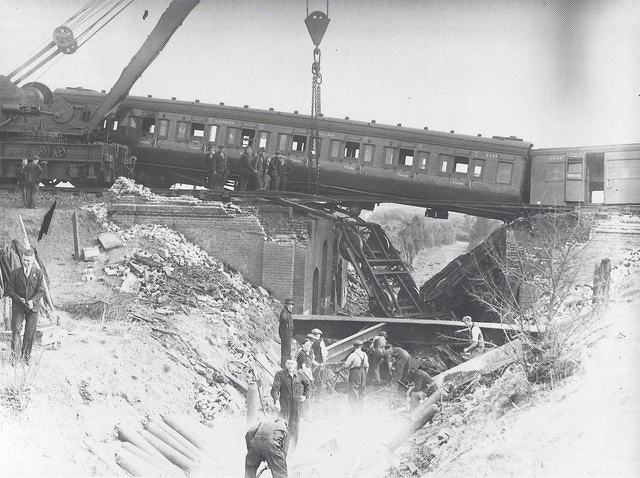The Railway Crash Disaster of August 1944
One of the most serious incidents experienced locally in World War Two took place in August 1944 when a German V1 rocket, known as a doodle bug, destroyed the bridge in Oak Lane Upchurch shortly before a train approached resulting in a tragic accident causing death, injury and chaos.
According to Peter Wood’s research at ‘Kent History Forum’ dated September 4th 2013, in the afternoon of August 16th flight lieutenant John Malloy of the RAF chased a V1 rocket in his ‘Tempest’ fighter plane over Kent. In his combat report Malloy wrote that he tried to shoot the rocket down without success then closed in on it and managed to flip it over with the wing of his plane. This worked and the rocket sped downwards but by sheer bad luck it landed almost under the bridge in Oak Lane and not in the surrounding fields. It exploded and completely destroyed the structure. It also killed a railway worker who was sheltering underneath.
As the 3-35 pm Victoria to Ramsgate train with about 400 passengers aboard approached the bridge from Rainham, the driver didn’t notice a problem until he saw smoke directly ahead but it was too late. Both he and the fireman desperately tried to stop the train but they failed and the engine tender and three carriages crashed heavily into the gap. ‘The East Kent Gazette’ of August 1944 reported that the engine was turned upside down and the front two carriages were crushed. The third coach mounted the wreckage in front and the fourth coach was left hanging over the gap where the bridge had previously stood. Passengers jumped from the carriages to help the trapped and injured. Seven passengers were killed in the front two carriages and the body of the dead railway worker who had been killed in the rocket explosion lay on the ground nearby.

With the train and carriages damaged and strewn over the embankment and in the gap where the bridge had stood, the ground was littered with wounded passengers who had been thrown out of the carriages, onto the track and down the embankment.
Miraculously, both the driver and the fireman survived without serious injury. After clambering from the wreck the fireman ran along the track in the direction of the Newington signal box to issue a warning for fear of a train coming from the opposite direction. Luckily, the train travelling to London had already been held up at Sittingbourne otherwise the disaster could have been much worse.
Doctors, ambulances, passers-by and members of the local WRVS were soon on the scene to help the casualties while the nearby transport café known as ‘The Rest Tea Rooms’ situated opposite on the A2 was turned into a temporary hospital as doctors and medical staff rushed to the scene to help. Most of the injured were eventually taken to St Bart’s Hospital in Rochester for emergency treatment.
According to ‘The East Gazette’ of August 1944 12 passengers were killed and 34 injured although more recent research suggests that less were killed and far more injured.
After the wreckage had been cleared a new bridge was constructed in November 1944 at a cost of £3,800 and it still exists today. The disaster turned out to be the most serious and tragic incident to hit the area during World War Two.











































































































































Comments
He lived opposite the church in the village.
He was a sailor on his way home on leave.
RIP xxx
I wrote an article in 2011, initally published on the BBC History website, about an interview with my mother (RAF [Bomber Command] Aircraftwoman Margaret House, stationed at Manston) who was on this same train. Perhaps very interesting for some.
Please see:
http://h2g2.com/entry/A47650304/conversation/view/F12678405/T6339724/page/1/
RSS feed for comments to this post